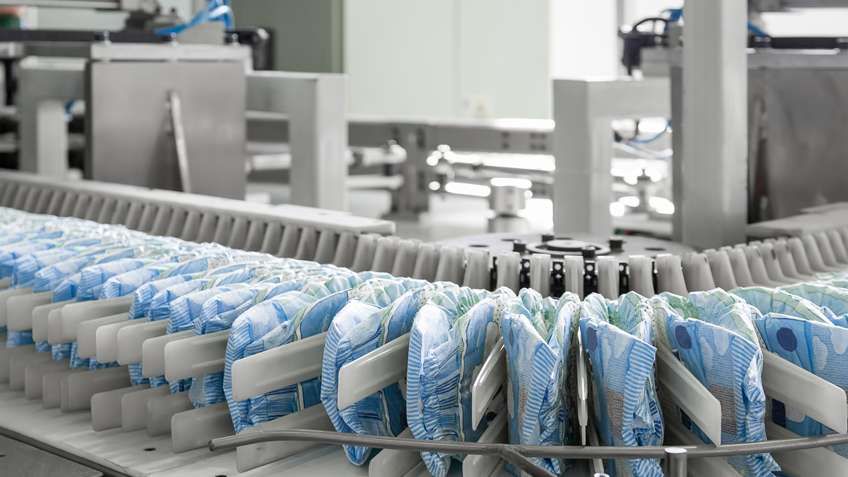A Global Reputation for Customer Service
More than eight decades after it was established, converting machine builder Curt G. Joa, Inc. proudly retains the full name of its founder. The Wisconsin-based business continues to live by its founder’s principles, too – including a near-compulsion to surpass customer expectations.
That’s one reason the company keeps its multidisciplinary engineering team well-staffed at all times. But the company’s namesake would not recognize its current customer list: leading global manufacturers of disposable, personal-hygiene items like diapers and incontinence products. He would also be astounded by the automation capabilities of the sophisticated, custom-made machines.
The customized machines take six to nine months to build. They are massive, occupying two floors with a footprint measuring 60 meters long. They accomplish multiple manufacturing processes, including accepting roll-fed paper material in a continuous motion and automatically splicing products.
Shortening the time to develop its machines and being able to differentiate itself from its competitors are key elements to the company’s growth. Joa wanted to provide its customers with faster time to implementation, as well as more meaningful and detailed production information from its machines. By standardizing its machine-design and development process, Joa was able to shorten its design time and evolve its machines to get ahead of its customers’ needs.
Complex Machines, Complex Development
Joa’s customers have traditionally operated multi-vendor production lines, purchasing a stacker from one vendor and a packaging machine from another. Whenever Joa builds a new machine for these customers, its engineers also tie system communications together.
“As control engineers, we are being asked to get more involved in integrating machine production processes into the customer’s production line and plant operations,” said Jerry Holzer, electrical engineering technology leader at Curt G. Joa, Inc. “But finding a way to get the different components talking together was always a challenge.”
As customers sought more meaningful and detailed production information from their machines, Joa’s engineering team began partnering more closely with them to better understand the type of machine and production data they needed.
Not surprisingly, as machine complexity increased, so did the design and development time required of Joa’s engineering staff.
Smarter machines with more automation, communication and integration capabilities entailed more programming and documentation time for Joa’s engineers. The lengthy pre-production phase extended Joa’s investment and delayed delivery of machines to customers. With new machines capable of producing 1,200 units per minute, each day customers must wait delays their potential for increased production output and profits.
“We needed a way to evolve our machines with the market – meeting customers’ needs more completely with added engineering value and customization,” said Holzer. “But we didn’t want to increase the time pressure on our engineering team.”
Streamlined Production, Earlier Release of Machines
For years now, Joa has standardized on Rockwell Automation control technologies, and has even become an OEM partner within the Rockwell Automation PartnerNetwork™ program. The EtherNet/IP™ based communication protocol and Rockwell Automation Integrated Architecture® platform have given Joa the flexibility to design machines that accommodate customers’ diverse needs.
The design environment within the platform allows Joa’s engineers flexibility when designing customized machines. All machines are designed using versatile, modular programming, allowing Joa to speed its machine design time significantly.
“When a customer request comes in, we can import our existing modules as needed to build machines to the customer’s specifications,” said Holzer. “This is crucial to our design-process productivity since we don’t make a fixed type of machine, but we can use standards-based programming modules to help build customized solutions faster.”
To further help streamline the machine design process, Joa relies on several design-software programs. One of which is the EPLAN Electric P8® electrical design software from EPLAN Software & Services, an Encompass™ Product Partner within the PartnerNetwork program.
Joa engineers use templates within the electrical schematic designs as a base and then customize based on each customers’ needs. A schematics generator then helps create documentation needed for manufacturing, purchasing, panel building, modeling and more.
The system helps Joa convey development changes from one internal team to another during the programming process. “If there’s a programming change, it can be cumbersome for someone producing electrical blueprints to sync their changes with someone producing the parts list,” explained Holzer. “With EPLAN, we now have the ability to automatically capture changes in the blueprints – simply and with little intervention.”

